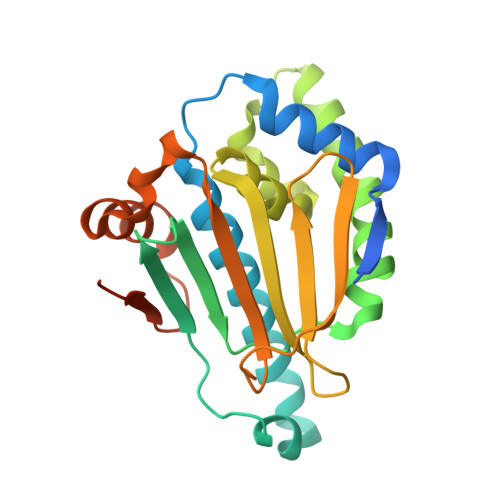Estimation of Drug-Target Residence Times by tau-Random Acceleration Molecular Dynamics Simulations.
Kokh, D.B., Amaral, M., Bomke, J., Gradler, U., Musil, D., Buchstaller, H.P., Dreyer, M.K., Frech, M., Lowinski, M., Vallee, F., Bianciotto, M., Rak, A., Wade, R.C.(2018) J Chem Theory Comput 14: 3859-3869
- PubMed: 29768913
- DOI: https://doi.org/10.1021/acs.jctc.8b00230
- Primary Citation of Related Structures:
5LO5, 5LO6, 6EI5, 6EL5, 6ELN, 6ELO, 6ELP, 6EY8, 6EY9, 6EYA, 6EYB, 6F1N - PubMed Abstract:
Drug-target residence time (τ), one of the main determinants of drug efficacy, remains highly challenging to predict computationally and, therefore, is usually not considered in the early stages of drug design. Here, we present an efficient computational method, τ-random acceleration molecular dynamics (τRAMD), for the ranking of drug candidates by their residence time and obtaining insights into ligand-target dissociation mechanisms. We assessed τRAMD on a data set of 70 diverse drug-like ligands of the N-terminal domain of HSP90α, a pharmaceutically important target with a highly flexible binding site, obtaining computed relative residence times with an accuracy of about 2.3τ for 78% of the compounds and less than 2.0τ within congeneric series. Analysis of dissociation trajectories reveals features that affect ligand unbinding rates, including transient polar interactions and steric hindrance. These results suggest that τRAMD will be widely applicable as a computationally efficient aid to improving drug residence times during lead optimization.
Organizational Affiliation:
Molecular and Cellular Modeling Group , Heidelberg Institute for Theoretical Studies , Heidelberg 69118 , Germany.

















